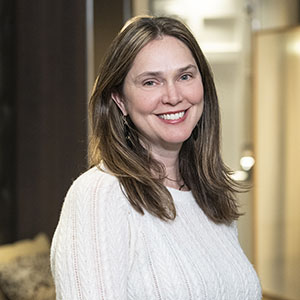This week, Matt Forti is excited to welcome Alison Powell, a manager in Bridgespan’s Advancing Philanthropy practice. In this post, Matt and Alison share four ways results-oriented donors can support their grantees with performance measurement, ensuring grantees remain in the driver’s seat and have the capacity and external resources they need to be successful.
It’s not surprising that donors investing their money in nonprofit organizations want to know that their dollars are helping to deliver results. In fact, results-oriented donors, in their quest to improve their grant making over time, would be remiss if they didn’t work closely with grantees to understand how their work is playing out on the ground.
Unfortunately, to nonprofits, those good intentions often result in massive data requests that can feel like busy work rather than a collaborative process of “getting better together.” For example, imagine a donor to a local family homeless shelter who asks for data points such as how many people the shelter fed last year, and how the cost per meal changed. Good questions? If these metrics are aligned to the shelter’s own performance targets, this data request could help stimulate a great conversation. But what if the shelter has been working to improve the nutritional quality of its food, and to work with fewer homeless families for longer periods of time to ensure a more permanent return to housing? The answers the donor seeks may have little to do with the true progress the nonprofit has made in transforming peoples’ lives.
What’s the solution? In Bridgespan’s latest research, “Building the Capacity to Measure and Manage Performance,” by Matt Forti and Kathleen Yazbak, nonprofits committed to measurement for their own learning and improvement shared four recommendations around how donors can best support their efforts and “get better together”:
1. Let the grantee drive what and how to measure: As in the example above, the indicators a grantee collects for its own learning and improvement, when chosen thoughtfully, should pretty much match indicators you as a donor care about. If not, it raises broader questions around whether you should be funding this organization or program to begin with.
2. Help the grantee identify opportunities to improve measurement. From what you’ve seen working with other nonprofits, what are the key opportunities you believe your grantee has to improve its approach to measurement? Does the grantee agree? What would it take to realize these opportunities?
3. Consider capacity investments to support grantees’ measurement: Recognize the need to build a grantee’s capacity to strengthen programs. While independent evaluations can be valuable to demonstrate program effectiveness and attract more resources, most grantees are far from ready for that type of measurement. They’re likely to need much more basic help in understanding how their program is working and learning to use measurement results to improve performance. By making capacity investments (e.g., a data system, a theory of change workshop, a measurement director) earlier in a grantee’s evolution, you can increase the odds that an evaluation later on will demonstrate the grantee’s model is working.
4. Consider non-financial supports to grantees on measurement: Do you have access to measurement experts or other professionals who could advise grantees on what and how to measure? For example, who could serve as a member of a grantee’s evaluation advisory committee?
Some donors have followed these recommendations to great effect.
Take the MetroWest Health Foundation, which provides $5 million in grants annually for health initiatives in Massachusetts. Several years ago, the foundation informally surveyed 35 grantees and found most felt their measurement capacity was only “moderate.” After convening a task force to study the issue further, the foundation decided to launch an “Evaluation Institute,” a training program for grantees to develop their own measurement design projects, address measurement challenges, and enhance their measurement thinking. Participants gave high marks to the program, and the foundation intends to implement a second Institute this fall.
Or take the Colorado Trust, which grants $20 million annually to improve access to health care for Coloradoans. To evaluate its own advocacy funding strategy, the Trust paired experienced evaluators with grantees over a three-year period to enhance their ability to identify and systematically measure progress in their work, and report on progress outcomes that linked to the Trust’s portfolio goals. In this way, measurement was valuable both for the Trust and its grantees.
What examples have you seen of donors supporting their grantees in measurement effectively?



